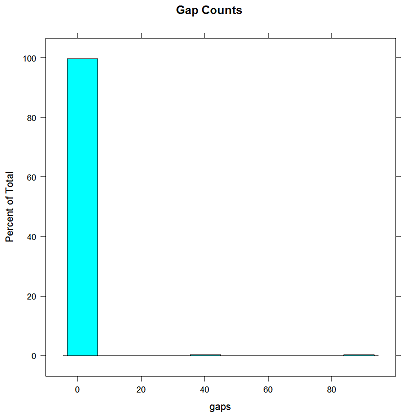I have a ton of univariate samples ($x_i \in \mathbb{R}^+$). I'd like an automated method to check for outliers and identify the outliers, if any are present. A reasonable model for the distribution of the non-outliers is a mixture of Gaussians. The number of Gaussians in the mixture and their parameters are not known a priori. Can you suggest a simple method for identifying outliers? Do you have any recommendations? It'd be nice if it were simple to code up in Python.
Something quick and dirty -- say, easy to understand, easy to implement, and pretty effective-- beats something complex but optimal. For example, I'm a bit reluctant to wade into something fancy based upon expectation maximization.
Example parameters: I might have 10,000 samples or so. The distribution of non-outliers might be a mixture of 2 Gaussians; or I might have a mixture of a few hundred Gaussians.
Update: People have asked how anything could possibly be an outlier, given these assumptions. (Presumably, the unstated concern is that this problem may be unsolvable: if every data set is always explainable by some mixture model, then there's no basis to ever identify anything as an outlier.) That's a fair question, so let me try to respond. In my application domain, I can reasonably assume that there will be dozens of samples from each component Gaussian. e.g., I might have 40,000 samples from a mixture of 100 Gaussians, where each Gaussian component has a probability no lower than 0.001 (so it is almost guaranteed that I have at least 10 samples from each Gaussian). I realize I didn't state this assumption earlier, and I apologize for that. However, with this additional assumption, I believe the problem is solvable. There exist examples of data sets where one or more points can be considered outliers (they cannot reasonably be explained by any mixture model). For example, consider a data set that has a single isolated point that is very far from all others: if it's far enough away, it can't be explained by the Gaussian mixture model and thus can be recognized as an outlier. In conclusion, I believe that the problem is well-defined and is solvable (given the additional assumption stated here): there do exist example situations where some points can reasonably be identified as outliers.
Note that I'm not trying to propose a special or unusual definition of outlier. I am happy to use the standard notion of outlier (e.g., a point that cannot reasonably be explained as having been generated by the hypothesized process, because it is too unlikely to have been generated by that process).


